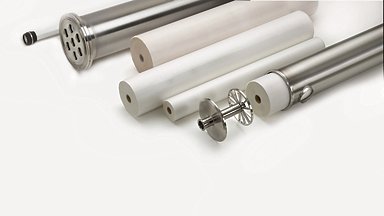Smoother texture, higher yield
The rising interest in cultured, concentrated dairy foods shines a spotlight on membrane filtration technology. The gentle membrane filtration process helps to ensure that the product contains the desired level of protein.
Those seeking production flexibility can use a membrane filtration unit for a diverse range of product recipes.
Uses and technologies

Protein concentration
The right content for each product
Protein is king in today’s fermented dairy products. The range of protein-rich varieties on supermarket shelves grows larger by the year – from traditional yoghurt products like skyr, kefir, quark and laban to chilled and ambient yoghurt drinks and innovative cooking ingredients. Ultrafiltration is a favoured way to produce these and similar products as it offers dairies and food processors the ability to calibrate exactly the amount of protein they desire in the product. The gentle, low-impact ultrafiltration process also optimises product yield because it preserves more protein in the mix compared to processes like centrifugal separation that apply stronger force.

Ideal for protein separation
Ultrafiltration
Ultrafiltration is used for concentrating large molecules, notably protein, in whole or skim milk fermented product mixes. It can produce a wide range of fermented products, including Greek-style yoghurt, skyr, kefir, quark and crème fraiche. It can also process yoghurt drinks and cooking ingredients. Ultrafiltration membrane pores are relatively large and the pressure applied to the product during the filtration process is relatively low. Mineral salts, lactose, organic acids and smaller peptides pass through as permeate. Proteins, fats and polysaccharides remain in the product as retentate. This low-impact process makes it possible to achieve the desired protein level while preserving product integrity better than a more robust centrifugal process.











